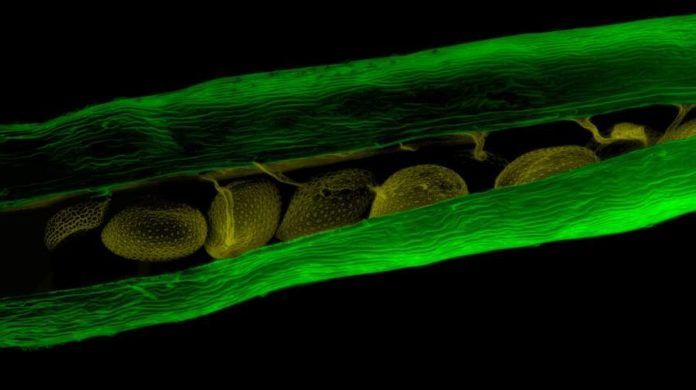Plants deserve more credit. They can’t move to find food or water, or to escape a predator. But that doesn’t mean they are helpless — far from it. They don’t have eyes, ears, a nose or mouth, but they can sense the world remarkably well — in some cases better than we can.
For example, as you might expect, plants are highly sensitive to light. Humans have three different kinds of light-receptors in their eyes to sense light; plants have 15. Plants can monitor light levels very precisely, from the ultraviolet to the infrared.
Plants’ powers of communication are also extraordinary. A plant being eaten by a predator such as a caterpillar will release ethylene, and this warns other plants that there is a threat nearby. If you look at a tree infested by herbivores and nearby trees that are untouched, you’ll find that the uneaten trees have produced protective chemicals that render them unpalatable to predators.
Ethylene is also produced as fruit ripens, and the gas is sensed by other plants and promotes ripening in them, too. It means fruits ripen at the same time, which attracts the animals needed to eat them and disperse the seeds.
If you cut a tomato plant, proteins are produced in response in many distant parts of the plant. There is also evidence of electrical processing of information in the roots of plants that is analogous to what we see in the animal brain.
Now, from the Riken Center for Sustainable Resource Science (CSRS) in Tsukuba, Ibaraki Prefecture, comes the discovery of a hormone that helps plants sense drought. It’s a reminder that plants are far more sophisticated than we often give them credit for.
“People think that plants are static because they do not move,” says Fuminori Takahashi, of CSRS. “However, in plants there is close and active communication between tissues separated by large distances.” The root can tell the shoot what is going on in the soil, and the information allows the plants to adapt when environmental conditions turn stressful. Plant scientists suspected this communication was going on but, until Takahashi’s discovery, they didn’t know how.
A lack of water is one of the most important factors that limits plant growth. The hormone identified by Takahashi and colleagues helps plants retain water when none is available in the soil.
The hormone moves through the plant circulatory system in an analogous way to how animal hormones move through the body. For example, if you have low blood pressure, your body produces the hormone vasopressin. The hormone circulates through the body in the blood and causes your arteries to constrict, which increases your blood pressure back to normal levels. Takahashi’s study shows, for the first time, that plants have a similar mobile hormone that can travel through the plant’s body.
“The hormone modulates root-to-shoot communications in response to drought stress conditions,” says Takahashi, “and transmits information about the lack of water in soil from root to leaves, to prevent water loss.”
Now they have identified the hormone, the team plans to modify it.
“We are working on modified peptides that are more effective for stress resistance than the natural ones,” Takahashi says. The team is also working on ways to mix hormones into fertilizer to enhance drought and salt resistance of crops in the field.
Scientists have shown in the past that communication goes on between plants. If plants are subjected to drought conditions, those that are in contact via the root system close the stomata, the holes on the leaves that let the plants breathe but which also allow water vapor to escape. The plants are basically shutting up shop in preparation for drought. Perhaps the signal is a hormone such as the one discovered by Takahashi — but this remains to be discovered.
The Tsukuba scientists use a plant called Arabidopsis, which is more commonly known as thale cress. It’s a weed; you might see it growing in a crack in the road and think nothing of it. But it was the first plant to have its complete genome sequenced and is grown in labs all over the world. That such a humble and boring-looking plant can yield such deep discoveries is a reminder of how much we still have to learn about the living world.




















































